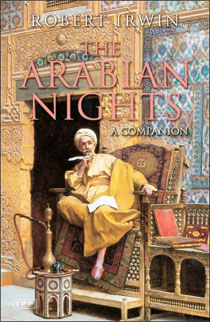IN a scholarly yet readable study, Robert Irwin has attempted to shed some light on the origin of “A Thousand and One Nights”. These enchanting tales are a silent yet powerful reminder that the Arab world conjures images other than suicide bombers and petrol. “A Thousand and One Nights” still lures its readers into an exotic world of romance, enchantment and mystery.
The author admits that his decision to rediscover “A Thousand and One Nights” was made out of sheer boredom, “to wake things up a bit”. As a student of Middle Eastern history and Islamic culture, Robert Irwin was struck by the dullness of most of his readings while the “Nights” had fired his imagination as a child and “was the product of a medieval culture that was confident, tolerant and pluralist”.
Many wrongly believe that “A Thousand and One Nights” are merely fairy tales but they are in fact an entertaining and precious source of information on the social history of the Middle East in medieval times. They offer numerous insights into the every day life of Arab townsfolk: About their eating, sleeping and cooking habits. They also provide enthralling descriptions of the lives of the rich and powerful princes and merchants in their luxurious palaces and mansions.
During the 18th and 19th century the “Nights” were regarded as a classic work of literature. It should be known that until the 18th century, Europeans did not think the Middle East was underdeveloped. Moreover, these colorful oriental tales exude both a charm and exoticism in dire contrast with the stark living conditions of many European countries at that time. The “Nights” popularity gradually declined as the readers became younger and “science fiction usurped the role of the fairy tale as the purveyor of marvels to adults”. Incidentally, most Arab intellectuals, Naguib Mahfouz is a notable exception, do not regard the tales as literature. “However, the best stories are artfully constructed, highly sophisticated fictions; they are works of literature in the fullest sense” says Irwin whose companion “investigates the aims of the authors of the stories… and how these same stories have been translated, interpreted, imitated and parodied in Europe and America”.
Robert Irwin gives an interesting account of the translations of the “Nights”, highlighting their discrepancies and noting that in the 18th century it was not uncommon for translators to claim they improved on the text they had translated from.
The origin of these tales is still enshrouded in mystery and their transmission muddled by forgers. However, if scholars agree that many authors have written “A Thousand and One Nights” over a long period of time, they still cannot determine how old the stories really are. The answer to this last question depends on what is considered to be the first manuscript of the “Nights”. And there happens to exist a number of potential versions. One of them could be Hazar Afsaneh, a Persian prototype subsequently translated into Arabic in the 8th century. Another version might be the fragments entitled “The Book of the Tale of the Thousand Nights” dating from the 9th century and discovered in Egypt. A 13th century version written in Syria has often been mentioned but never found and many would agree that, the 14th or 15th century manuscript used by the French Antoine Galland, is the original version. Antoine Galland who was the first European to translate “A Thousand and One Nights”, helped popularize these oriental tales in Europe. These stories introduced European readers to new literary genres and according to Irwin: “The way both the European novel and the short story developed owed an immense amount to the “Nights” and to other Arab works of fiction and folklore”.
Most of the stories in “A Thousand and One Nights” are fantastic and it is not surprising that generations of children have been so captivated by their marvelous and magical spirit. The recent and phenomenal success of the Harry Potter series can only confirm the lingering influence of the “Nights”.


